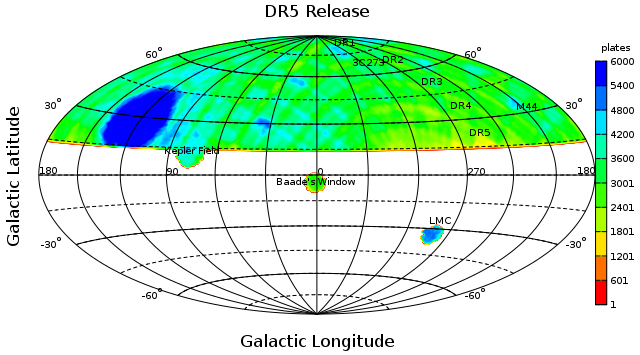DASCH Data Release 5 Now Available; Update on Flood Recovery
Jonathan Grindlay Center for Astrophysics | Harvard & Smithsonian
The Digital Access to a Sky Century @ Harvard (DASCH) team is pleased to announce that data release 5 (DR5) is now available, covering the galactic latitude range b = 30° to 15°. Nearly 140,000 plates have now been scanned, representing about a third of the direct-imaging Harvard plates, from which nearly 9 billion magnitude measurements have been derived and posted in the object-oriented DASCH database. With scanning now set to resume after a lengthy interruption (see below), the remaining DR6 to DR12 (in 15° steps in b down to the south galactic pole) should be complete by late 2018.
As reported in Sky & Telescope (July 2016, p. 14), on 18 January 2016 (Martin Luther King Jr. Day), an 8-inch-diameter Cambridge city water pipe burst underneath the Harvard-Smithsonian Center for Astrophysics (CfA). Before the 60 psi flow could be shut off, it had flooded the lowest floor of the Plate Stacks in CfA Building D to a depth of ~1 meter, submerging (at least partly) some 62,000 glass plates and major parts of the plate scanner as well as computers and disks.
Fortunately no data were lost. The plates were rapidly removed into ~2,000 plastic boxes by a bucket-brigade contingent of CfA (and other) volunteers over ~48 hours and frozen in the (fortunately) sub-zero °C Cambridge air and then transported to a large freezer facility (to prevent mold from starting) at the Polygon Group facility in North Andover, Massachusetts. We worked with Harvard Weissman Preservation Center staff to develop a method to optimally thaw the plates (one box at a time) and clean the muddy Cambridge water off the emulsion (fine brushing in three successive baths, which restores the plates completely).
After months of dealing with Harvard insurance, we are pleased to announce that plate cleaning and restoration work is about to begin (under supervision of Weissman Center staff) and should result in all plates being returned for scanning over the next two years. The new and somewhat faster custom high-speed plate scanner has just been received from Aerotech, Inc. (see the photos below), and will be integrated with our high-speed CCD and data systems over the next several weeks.
How do you move a ~1 ton precision (~0.1 μm) X-Y scanner into a 1932 building's basement with no outside door? In pieces, with a fork lift, through a removed window!
First, move in the steel base for the scanner (on the floor at right in the first photo, next to Bob Simcoe, designer of the scanner plate-loading and imaging systems). Then bring in a moveable hoist (black frame at left) and the granite bed for the scanner, which is lowered onto a dolly. The assembled scanner must fit between four white vertical tubes that pad the steel framework grid to support two floors of plates above.
Photos courtesy Josh Grindlay (Harvard-Smithsonian Center for Astrophysics)
Second,center the steel base between the four columns and use the hoist to lift the scanner bed from the dolly and lower it toward the granite bed. Then bolt four massive corner braces onto the bed before lowering the assembly onto four high-pressure air pistons on the corners of the steel base frame, which provide precision leveling during scanner operation.
Finally, use the hoist to mount vertical granite blocks to support a massive cross-piece granite block. This provides a vibration-free mount for the fixed CCD camera (4K x 4K, with 11-μm pixels) and telecentric lens mounted above. Images of 45 x 45 mm plate tiles are recorded every ~0.6 second as the scanner positions the two-plate fixture to within ~0.1 pixel. A 10 x 6 tiled image of each plate, half-stepped in X, is obtained in ~40 seconds and later mosaicked into a single FITS image (23.1K x 18.5K; ~1 Gb), with full WCS J2000 (corrected for proper motion) and B-band photometry for all stellar objects detected.
See the project's website for a photo of the original DASCH scanner and how both the the CCD camera and telecentric lens are mounted, along with the two-plate loading fixture (for 8 x 10 inch plates). The camera, lens, and fixture were not damaged in the flood and will soon be re-mounted on the new scanner.
DASCH is currently supported in part by NSF grant AST-1313370, which should be acknowledged in all papers making use of DASCH data.



